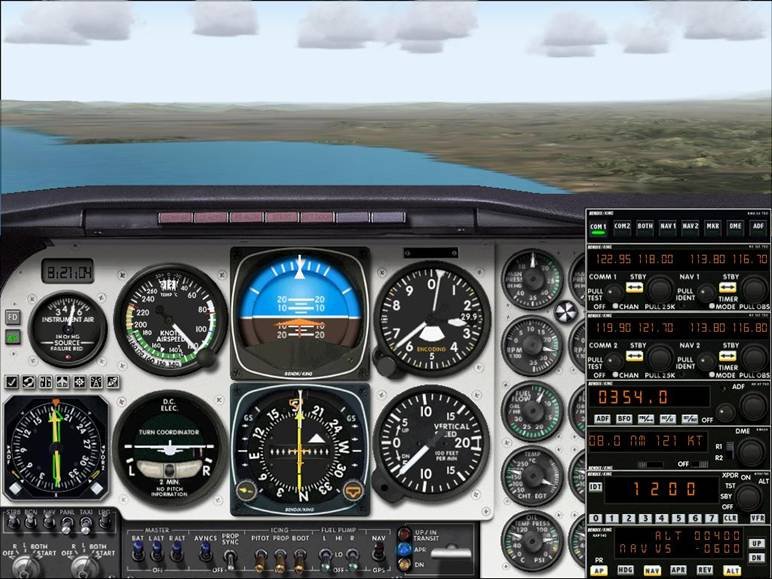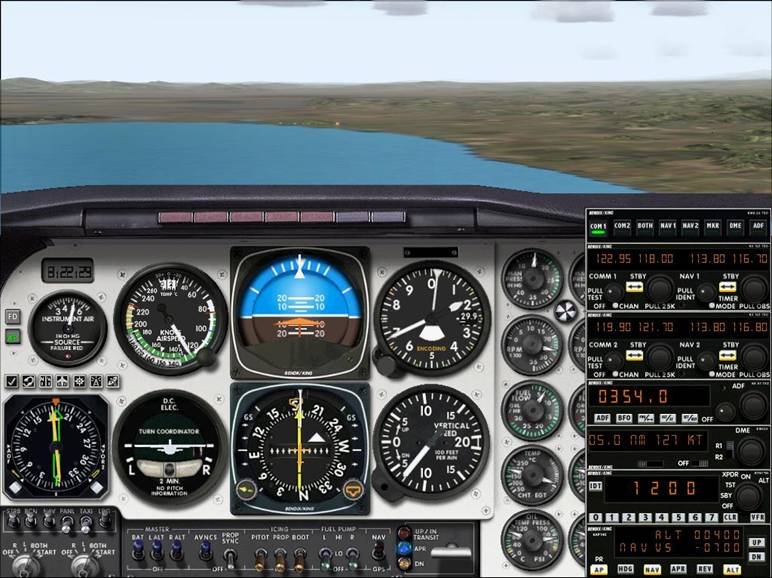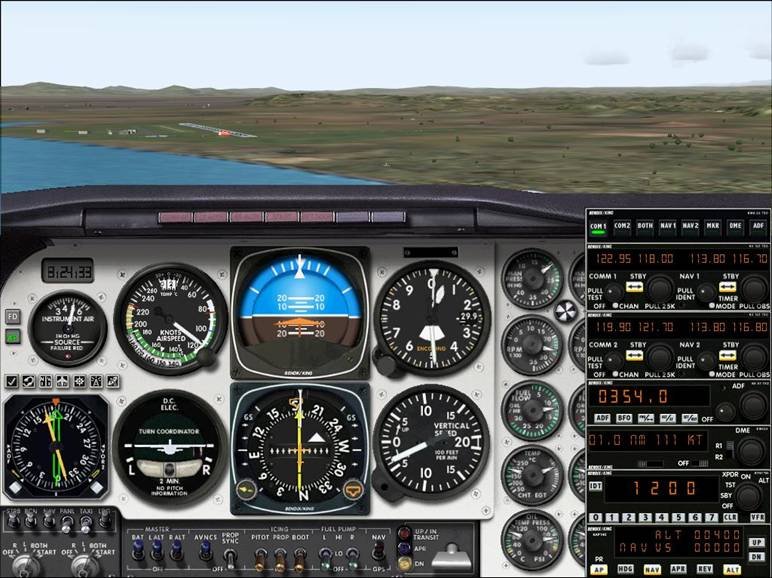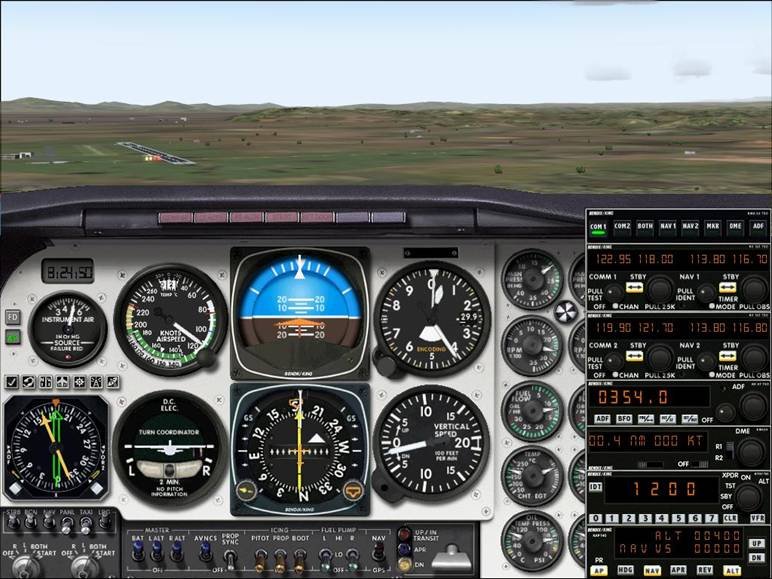Non Precision Approach Page 6
What descent rate should I use?
Well here is the theory behind the technique that is widely used.
Remember the 1 in 60 rule we used on the arc?
If we have a line of 60 units and go up 1 unit at the end then the angle formed will be 1 degree. So over a distance of 60 nautical miles 1 degree would equate to 1 nm. Over 6000m it would be 100m. etc etc.
1 in 60 rule
60=1
600=10
6000=100
It also applies to multiples of 60.
eg: 1 degree over 120nm would be 1nm x 120/60 = 2nm.
It just so happens that there is 6080ft in a nautical mile. Very handy number as it is near enough to a multiple of 60.
Therefore 1 degree over 6000ft equals 100ft.
So if we were flying at 60kts we would be traveling at 60 nm per hr which is the same as 1nm a minute which is the same as 6000ft per min. If we were descending at 1 degree then we would need to descend at 100ft per minute (6000 / 60 = 100). If we are on a 3 degree slope then it is:
3 x 100 = 300.
We would need to descend at 300 ft/min to maintain a 3 degree slope at 60 kts.
What about 120 kts?
Well we would need to descend at twice the rate we needed at 60 kts as follows.
120 kts is equal to 2nm/min or 12000ft per min.
So for one degree it would be twice the height to lose at 60 kts or 2 x 100 = 200ft.
So a 3 degree slope would be 3 x 200 = 600ft.
Therefore we would need to descend at 600 ft per min to maintain a 3 degree slope at 120 kts.
Lets look at other multiples for a 3 degree slope and you will see a pattern form.
Speed versus rate
60kts = 300ft/min
120kts= 600 ft/min
180 kts= 900 ft/min
240 kts = 1200 ft/min
In other words we multiply our ground speed by 5 to get the required rate of descent.
So for the in between values:
90 kts = 90x5 = 450 ft/min
100kts = 100x5 = 500 ft/min
140 kts = 140x5 = 700ft/min
I always find mental maths an issue when I’m flying, as what little remaining brain power I have left is usually spent trying to fly right side up. So generally I look for the easy options. Rather than multiply the groundspeed by 5 I half the Ground speed number and put a zero on the end. Have a look at the numbers above and you will see it works a treat.
So back to our approach
If we are going to fly it at 130 kts initially then we will need a rate of descent of 650 ft/min. Set the nearest 100 ft to that in the vert speed window. All we need to do now is to sit back and monitor the approach. Don’t make huge corrections just recheck the groundspeed and vary it a couple of 100 ft/min extra in the desired direction. At some point we will need to reconfigure and put out the gear and landing flap. As we reduce speed recalculate your required rate of descent and set that in the window.
If you do not have the required visual reference at MDA then commence the missed approach. Unless you intend to circle (remember there is a higher minimum for this) then there is very little point in leveling off as you will get progressively higher on the ideal approach as you continue towards the nav aid and this could lead to an unstable approach as you will need much higher descent rates to make the runway and you are closer to the ground. Not a good combination. In a lighter aircraft type you may go slightly lower on the nominal approach profile (but not less than the charted fix altitudes) so as to give yourself more time to sight the runway environment and because of your slower relative speed and increased maneuverability this should not be too much of an issue.
Once that you have flown a few approaches using the autopilot then have a go with a few hand flown ones for practice.
 On On an 8 nm final with intermediate flap out and on speed. Note the groundspeed is 120 kt and my rate set on the autopilot is 600 ft/min. At 8 miles we should be 2600 ft….looking good.
On On an 8 nm final with intermediate flap out and on speed. Note the groundspeed is 120 kt and my rate set on the autopilot is 600 ft/min. At 8 miles we should be 2600 ft….looking good.
At the final approach fix. At 5 miles we should be 1700 ft. Note the slight increase in GS. I reset the ROD to 700 ft/min earlier to cover that. Now I am on slope I might just back that off as I need to put out the gear and landing flap and that will slow me down and therefore the rate of descent needs to be reduced.
Things are really starting to happen quickly now. We are at 1 nm and at 500 ft. The autopilot is in the capture mode for 400 ft as the vertical speed has reduced to zero. Note the position of the runway and how offset it is. We are on altitude and on speed.

At minimum altitude and still 0.4 nm until the Missed approach point. Notice how this approach has set us up nicely on the PAPI for 16. Now is the time to disconnect the autopilot and proceed visually. Of course you could do this earlier but it is good practice to fly approaches to minima so as to see what they are like so that when the weather is really bad you know what to expect.
<< Prev Page - Next Page >>

